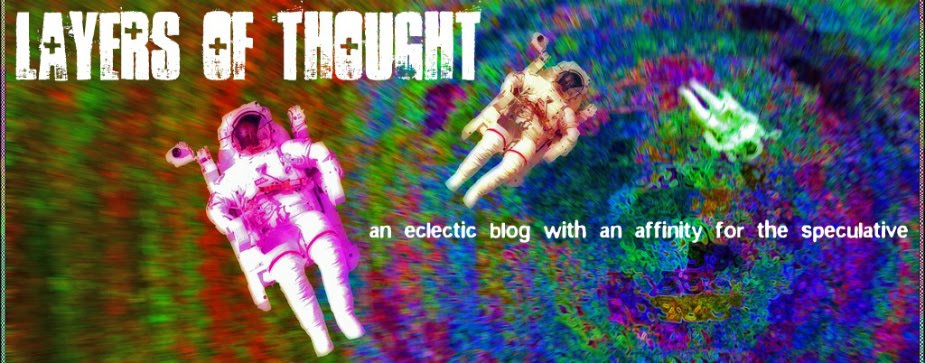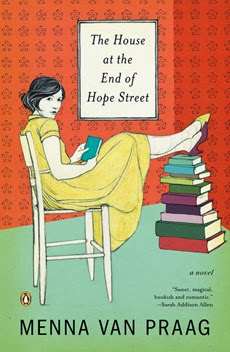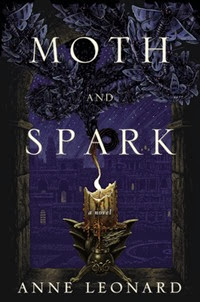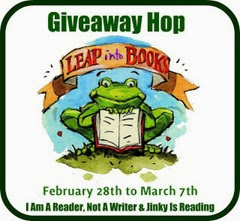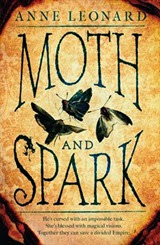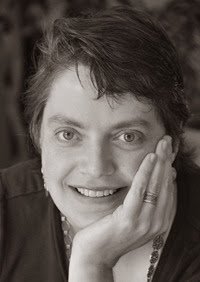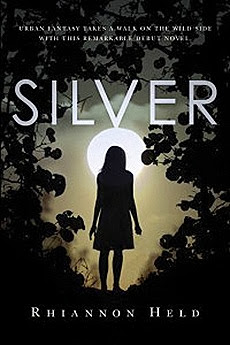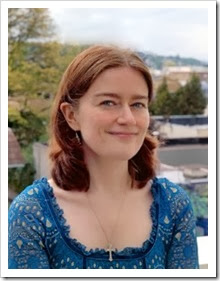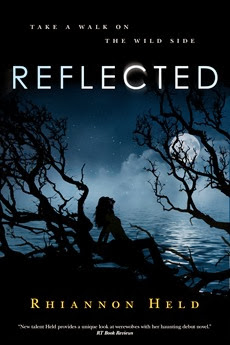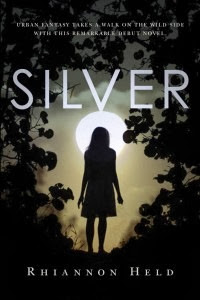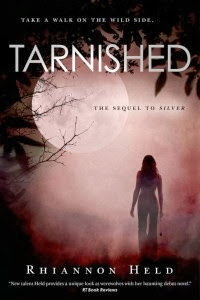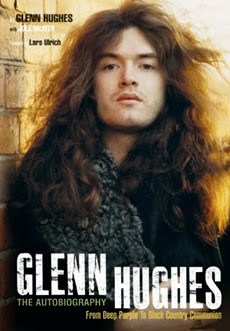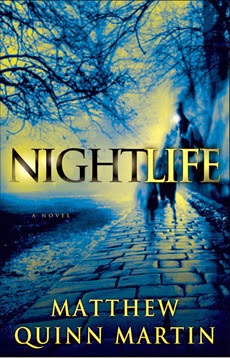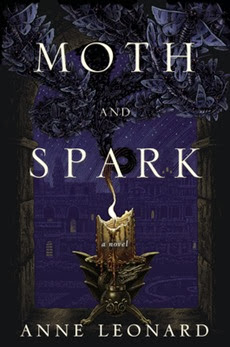
It’s our Incoming Books feature for February 13, 2014.
Moth and Spark by Anne Leonard
A prince with a quest. A commoner with mysterious powers. And dragons that demand to be freed—at any cost.
Prince Corin has been chosen to free the dragons from their bondage to the Empire, but dragons aren’t big on directions. They have given him some of their power, but none of their knowledge. No one, not the dragons nor their riders, is even sure what keeps the dragons in the Empire’s control. Tam, sensible daughter of a well-respected doctor, had no idea before she arrived in the capital that she is a Seer, gifted with visions. When the two run into each other (quite literally) in the library, sparks fly and Corin impulsively asks Tam to dinner. But it’s not all happily ever after. Never mind that the prince isn’t allowed to marry a commoner: war is coming to Caithen. Torn between Corin’s quest to free the dragons and his duty to his country, the lovers must both figure out how to master their powers in order to save Caithen. With a little help from a village of secret wizards and a rogue dragonrider, they just might pull it off.
Hardbound | 384 pages | 20 Feb 2014 | Viking Adult
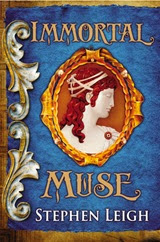
Immortal Muse by Stephen Leigh
An immortal Muse whose very survival depends on the creativity she nurtures within her lovers…
Another immortal who feeds not on artistry but on pain and torment...
A chase through time, with two people bound together in enmity and fury…
Magic and science melded together into one, and an array of the famous and infamous, caught up unawares in an ages-long battle…
Immortal Muse is a tale that takes the reader on a fascinating journey from Paris of the late 1300s with the alchemists Perenelle and Nicolas Flamel, to contemporary New York City. Along the way, there are interludes with Bernini in Rome in 1635; with Vivaldi in Venice of 1737; with Antoine-Laurent de Lavoisier and Robespierre in the Paris of the French Revolution; with William Blake and John Polidori in 1814; with Gustav Klimt in fin de siècle Vienna; with Charlotte Salomon in WWII France. And in modern-day New York, a complicated dance of love and violence finally brings a resolution to the centuries-old deadly feud.
Hardbound | 576 pages | 04 Mar 2014 | DAW
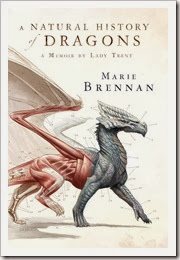
A Natural History of Dragons by Marie Brennan
Marie Brennan begins a thrilling new fantasy series in A Natural History of Dragons, combining adventure with the inquisitive spirit of the Victorian Age.
You, dear reader, continue at your own risk. It is not for the faint of heart—no more so than the study of dragons itself. But such study offers rewards beyond compare: to stand in a dragon’s presence, even for the briefest of moments—even at the risk of one’s life—is a delight that, once experienced, can never be forgotten. . . .
All the world, from Scirland to the farthest reaches of Eriga, know Isabella, Lady Trent, to be the world’s preeminent dragon naturalist. She is the remarkable woman who brought the study of dragons out of the misty shadows of myth and misunderstanding into the clear light of modern science. But before she became the illustrious figure we know today, there was a bookish young woman whose passion for learning, natural history, and, yes, dragons defied the stifling conventions of her day.
Here at last, in her own words, is the true story of a pioneering spirit who risked her reputation, her prospects, and her fragile flesh and bone to satisfy her scientific curiosity; of how she sought true love and happiness despite her lamentable eccentricities; and of her thrilling expedition to the perilous mountains of Vystrana, where she made the first of many historic discoveries that would change the world forever.
Tor Books | February 2014 | Trade Paperback | 352 pages
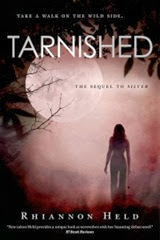
Tarnished by Rhiannon Held
Andrew Dare has found his mate in Silver, but they haven’t found the pack they can call home. Some of his old friends think he should return and challenge Roanoke for leadership of all the werewolf packs on the East Coast. But Andrew has baggage—his violent history with the packs of Spain and the rumors of his lack of control. And then there’s Silver—the werewolf who has lost her wild self to a monster’s assault, and who can no longer shift forms. But perhaps together they can overcome all the doubters.
The second book in Rhiannon Held's wonderful urban fantasy series, Tarnished plunges readers into the world of the shape-shifter packs who live hidden among us.
Tor Fantasy | December 2013 | Mass Market Paperbound | 368 pages

Reflected by Rhiannon Held
Rhiannon Held continues the secret lives of the werewolf packs that live and hunt alongside human society in Reflected, the third book of the series that began with her debut novel, Silver. Silver and her mate Andrew Dare are pack leaders of the entire North American werewolf population, and that makes the more traditional packs in Europe very nervous indeed. It’s getting hard to hide from human surveillance.
Tor Books | 2/18/2014 | Trade Paperback | 336 pages
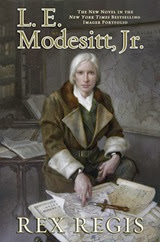
Rex Regis (Imager Portfolio #8) by L. E. Modesitt Jr.
The saga of the Imager Quaeryt, Commander in the forces of Lord Bhayar, reaches a new climax as the great struggle to unify the continent of Lydar enters its final phase in L.E. Modesitt's Rex Regis, Book 8 in The Imager Portfolio.
Only the land of Khel remains uncommitted to Bhayar’s rule. Their decision could mean a lasting peace, or more conflict across an already war-ravaged realm.
While the conqueror of Bovaria awaits emissaries to arrive with news of Khel’s decision, other weighty matters occupy Bhayar, his sister Velora, and her husband Quaeryt—not the least of which is the fulfillment of Quaeryt's dream to create the world's first Imager academy, where the magical abilities of these powerful casters may be honed, managed, and put to the service of the common good.
But before that dream may be realized, or Khel’s fateful choice made known, the spectre of high treason threatens to unravel all that Quaeryt has achieved, catapulting him toward a fateful confrontation with Bhayar's most powerful military leaders.
Tor Books | January 2014 | Hardcover | 448 pages
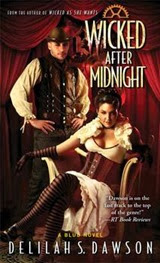
Wicked After Midnight by Delilah S. Dawson
An electrifying paranormal romance . . . with a twist!
Only rebellious Demi Ward could be bored with her life as a contortionist in Criminy Stain’s magical traveling circus. But being a cabaret star in the City of Light is dangerous . . . especially for an audacious Bludman.
After Demi’s best friend, Cherie, is brutally kidnapped en route to Paris by a roving band of masked slavers, passionate highwayman Vale Hildebrand shows up to save the day. With his help, Demi rises to the top of the cabaret scene as part of her plot to find Cherie—but what she really discovers is a taste for Vale’s kisses. Meanwhile, wealthy suitors vie for a night of her charms, crowding the glittering club where Demi commands the stage with a host of colorful daimons. She is soon seduced by a smoldering portrait artist whose ties to a secret society could be the break she and Vale need on their hunt. But—unlike the Paris that Demi read about in college on Earth—the Paris of Sang is full of depraved pleasures and deadly surprises. . . .
Pocket Books | Mass Market Paperback 448 pages | January 2014
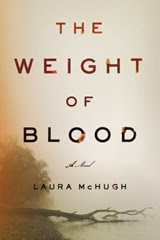
The Weight of Blood by Laura McHush
For fans of Gillian Flynn, Scott Smith, and Daniel Woodrell comes a gripping, suspenseful novel about two mysterious disappearances a generation apart.
The town of Henbane sits deep in the Ozark Mountains. Folks there still whisper about Lucy Dane’s mother, a bewitching stranger who appeared long enough to marry Carl Dane and then vanished when Lucy was just a child. Now on the brink of adulthood, Lucy experiences another loss when her friend Cheri disappears and is then found murdered, her body placed on display for all to see. Lucy’s family has deep roots in the Ozarks, part of a community that is fiercely protective of its own. Yet despite her close ties to the land, and despite her family’s influence, Lucy—darkly beautiful as her mother was—is always thought of by those around her as her mother’s daughter. When Cheri disappears, Lucy is haunted by the two lost girls—the mother she never knew and the friend she couldn’t save—and sets out with the help of a local boy, Daniel, to uncover the mystery behind Cheri’s death.
What Lucy discovers is a secret that pervades the secluded Missouri hills, and beyond that horrific revelation is a more personal one concerning what happened to her mother more than a decade earlier.
The Weight of Blood is an urgent look at the dark side of a bucolic landscape beyond the arm of the law, where a person can easily disappear without a trace. Laura McHugh proves herself a masterly storyteller who has created a harsh and tangled terrain as alive and unforgettable as the characters who inhabit it. Her mesmerizing debut is a compelling exploration of the meaning of family: the sacrifices we make, the secrets we keep, and the lengths to which we will go to protect the ones we love.
Random House | ARC Edition | 320 pages | March 2014
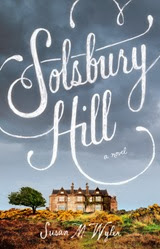
Solsbury Hill by Susan M. Wyler
The windswept moors of England, a grand rustic estate, and a love story of one woman caught between two men who love her powerfully—all inspired by Emily Bronte’s beloved classic, Wuthering Heights. Solsbury Hill brings the legend of Catherine and Heathcliff, and that of their mysterious creator herself, into a contemporary love story that unlocks the past.
When a surprise call from a dying aunt brings twenty-something New Yorker Eleanor Abbott to the Yorkshire moors, and the family estate she is about to inherit, she finds a world beyond anything she might have expected. Having left behind an American fiance, here Eleanor meets Meadowscarp MacLeod—a young man who challenges and changes her. Here too she encounters the presence of Bronte herself and discovers a family legacy they may share.
With winds powerful enough to carve stone and bend trees, the moors are another world where time and space work differently. Remanants of the past are just around a craggy, windswept corner. For Eleanor, this means ancestors and a devastating romantic history that bears on her own life, on the history of the novel Wuthering Heights, and on the destinies of all who live in its shadow.
ARC Edition | 304 pages | 01 Apr 2014 | Riverhead
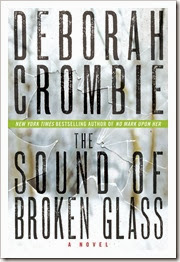
The Sound of Broken Glass by Deborah Crombie
In the past . . . On a blisteringly hot August afternoon in Crystal Palace, once home to the tragically destroyed Great Exhibition, a solitary thirteen-year-old boy meets his next-door neighbor, a recently widowed young teacher hoping to make a new start in the tight-knit South London community. Drawn together by loneliness, the unlikely pair forms a deep connection that ends in a shattering act of betrayal.
In the present . . . On a cold January morning in London, Detective Inspector Gemma James is back on the job now that her husband, Detective Superintendent Duncan Kincaid, is at home to care for their three-year-old foster daughter. Assigned to lead a Murder Investigation Team in South London, she's assisted by her trusted colleague, newly promoted Detective Sergeant Melody Talbot. Their first case: a crime scene at a seedy hotel in Crystal Palace. The victim: a well-respected barrister, found naked, trussed, and apparently strangled. Is it an unsavory accident or murder? In either case, he was not alone, and Gemma's team must find his companion—a search that takes them into unexpected corners and forces them to contemplate unsettling truths about the weaknesses and passions that lead to murder. Ultimately, they will begin to question everything they think they know about their world and those they trust most.
William Morrow | February 25, 2014 (first published 2/19/2013) | Trade Paperback | 384 pages
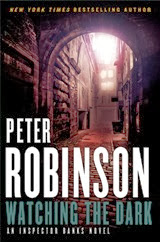
Watching the Dark by Peter Robinson
New York Times bestselling author Peter Robinson brings back Detective Chief Inspector Alan Banks and his colleague DI Annie Cabbot in a case riddled with corruption
A decorated policeman is murdered on the tranquil grounds of the St. Peter's Police Treatment Centre, shot through the heart with a crossbow arrow, and compromising photographs are discovered in his room. Detective Chief Inspector Alan Banks is well aware that he must handle the highly sensitive and dangerously explosive investigation with the utmost discretion. And as he digs deeper, he discovers that the murder may be linked to an unsolved missing persons case from six years earlier and the current crime may involve crooked cops.
2/25/2014 | William Morrow (Harper Collins) | Trade PB | Pages: 384
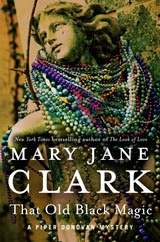
That Old Black Magic by Mary Jane Clark
New York Times bestselling author Mary Jane Clark whips up a savory and suspenseful confection, filled with murder, mystery, history, and voodoo, in which Piper Donovan must unmask a devious killer striking in New Orleans's legendary French Quarter
That old black magic
Aspiring actress and wedding-cake decorator Piper Donovan has barely arrived in New Orleans to perfect her pastry skills at the renowned French Quarter bakery Boulangerie Bertrand when a ghastly murder rocks the magical city.
Intrigued by the case, Piper can't help but look for the "Hoodoo Killer" among the faces around her. Could it be the handsome guide eager to give her special private tours? Or the inscrutable jazz musician who plays on historic Royal Street? What about the ratings-starved radio talk-show host? Or even the amiable owner of the local Gris-Gris Bar?
Though Piper has a full plate decorating cakes for upcoming wedding celebrations, she's also landed an exciting but unnerving role in a movie being shot in the Big Easy. When the murderer strikes again, leaving macabre clues, she thinks she can unmask the killer. But Piper will have to conjure up some old black magic of her own if she hopes to live long enough to reveal the truth.
William Morrow | 1/21/2014 | Hardcover | Pages: 368
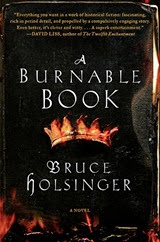
A Burnable Book by Bruce Holsinger
In Chaucer's London, betrayal, murder, and intrigue swirl around the existence of a prophetic book that foretells the deaths of England's kings
London, 1385. Surrounded by ruthless courtiers—including his powerful uncle, John of Gaunt, and Gaunt's artful mistress, Katherine Swynford—England's young king, Richard II, is in mortal peril. Songs are heard across London—catchy verses said to originate from an ancient book that prophesies the ends of England's kings—and among the book's predictions is Richard's assassination. Only a few powerful men know that the cryptic lines derive from a "burnable book," a seditious work that threatens the stability of the realm. To find the manuscript, wily bureaucrat Geoffrey Chaucer turns to fellow poet John Gower, a professional trader in information with connections high and low.
Gower discovers that the book and incriminating evidence about its author have fallen into the unwitting hands of innocents, who will be drawn into a conspiracy that reaches from the king's court to London's slums and stews—and potentially implicates Gower's own son. As the intrigue deepens, it becomes clear that John Gower, a man with secrets of his own, may hold the key to saving the king, and England itself.
Medieval scholar Bruce Holsinger draws on his vast knowledge of the period to add colorful, authentic detail—on everything from poetry and bookbinding to court intrigues and brothels—to this highly entertaining and brilliantly constructed literary mystery that brings medieval England gloriously to life.
William Morrow | 2/18/2014 | ARC | Pages: 464
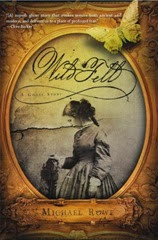
Wild Fell by Michael Rowe
The crumbling summerhouse called Wild Fell, soaring above the desolate shores of Blackmore Island, has weathered the violence of the seasons for more than a century. Built for his family by a 19th-century politician of impeccable rectitude, the house has kept its terrible secrets and its darkness sealed within its walls. For a hundred years, the townspeople of alvina have prayed that the darkness inside Wild Fell would stay there, locked away from the light.
Jameson Browning, a man well acquainted with suffering, has purchased Wild Fell with the intention of beginning a new life, of letting in the light. But what waits for him at the house is devoted to its darkness and guards it jealously. It has been waiting for Jameson his whole life . . . or even longer. and now, at long last, it has found him.
e-book | 300 pages | ChiZine Publications | November 15th 2013
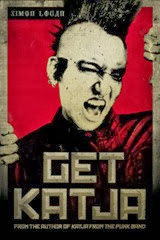
Get Katja by Simon Logan
Katja from Simon Logan’s award-winning Katja From the Punk Band is back. Free and on the mainland, she emerges from hiding, only to find herself hunted by transvestite debt collectors, a mad surgeon and his voyeuristic fetish nurse and a corrupt detective, all of whom will stop at nothing to claim her for their own. And behind this scramble lies a twisted mind, desperate for revenge. Replete with dark humour, chaotic storytelling, and a fast-paced industrial thriller setting, Get Katja is the latest novel from the author of Pretty Little Things to Fill Up The Void, Nothing Is Inflammable, and I-O.
e-book | 250 pages | ChiZine Publications | March 18, 2014
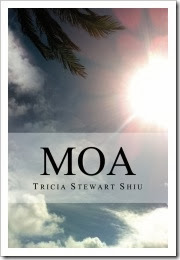
Moa by Tricia Stewart Shiu
Hillary Hause is not a witch. But, everyone in her conservative small town thinks so. When she is given a trip to Hawaii for graduation, this energetic eighteen-year-old anticipates adventure but gets more than she bargained for when Moa, an ancient Hawaiian spirit, pays her an unexpected visit.
With the help of her older sister, Molly and her seven-year-old niece, Heidi, Hillary embarks on a journey in which she not only saves herself, her family and Moa, but also the Hawaiian Islands. In the end, she learns to accept herself and her spiritual gifts warts and all.
e-book | January 31, 2012 | 156 pages | Createspace
